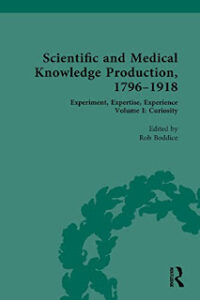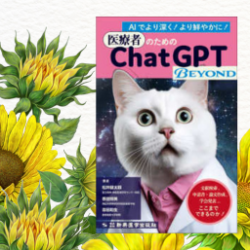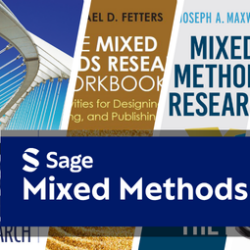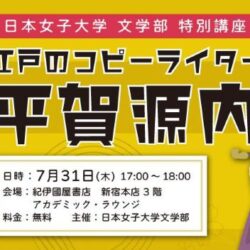ロブ・ボディス編/19世紀の科学・医学と知の生産:同時代文献集成 1796-1918年(全4巻)
「感情史」で注目を集める研究者が編んだ、19世紀の医科学史の新たな貌を示す文献集成
ロブ・ボディス編/19世紀の科学・医学と知の生産:同時代文献集成 1796-1918年(全4巻)
Scientific and Medical Knowledge Production, 1796-1918 : Experiment, Expertise, Experience (Routledge Historical Resources)

Editor: Rob Boddice, PhD, FRHistS, Senior Research Fellow at the Academy of Finland Centre of Excellence in the History of Experiences, Tampere University, Finland
2023:05 4 vols. 1,258 p. set ISBN 978-0-367-44373-3 (Routledge) -GB-
GBP 400.00
Web販売価格:税込¥92,492 / 標準価格:税込¥128,040
*2024年7月30日時点の価格です。実際の価格は、為替レートや出版社の都合により変動いたしますので、最新の価格は以下オンラインストアリンクをご参照ください。
*Web販売価格は、紀伊國屋書店BookWeb Proでご注文され、付帯作業を伴わない納品を行い、弊社標準書式による請求書を発行し遅滞なくお支払いただく場合、あるいは、クレジットカードでお支払いいただく場合に適用される販売価格です。
概要
19世紀、科学と医学の知はいかにして生まれ、生きられ、経験されていたのでしょうか。それを探るためには、当時の科学的実践の経験の内奥に迫る手がかりとなる文献を渉猟するに如くはありません。
全4巻の本書は、21世紀の人文学の境界を越えて広がる「感情史」のアプローチの旗手として注目を集めている歴史研究者ロブ・ボディスを編者に迎えて、「長い19世紀」の科学・医学史への新たな視点を開く同時代文献116点を集成します。文献選択の基準は、その科学思想・実験の成功如何ではなくて、科学の営みがいかに専門知を形成し、政治・道徳的価値を帯び、実践的正当化を伴うかを示す点にあり、今日では科学的に疑問視されている著述も含みますが、これは科学が単なる冷徹な知的生産であったというよりも、人間の生きられた経験、移り変わる情動的な営みからも形成されていた、当時の実験的な文化の諸相を浮かび上がらせるためのアプローチです。全4巻は、第1巻「好奇心」第2巻「人間性」第3巻「権威」第4巻「不確実性」のテーマ別で、全体と各巻に編者ロブ・ボディスの序文を付します。
今日では稀覯かつ散逸しがちな文書資料を気鋭の研究者の視点で精選し、当該テーマに関連性の高い重要な抜粋のみを編集復刻し解説を加えた本書は、19世紀研究、科学・医学史研究に必携です。
価格照会・ご購入
- 紀伊國屋書店でご購入(一般の方向け):紀伊國屋書店ウェブストア
- 紀伊國屋書店でご購入(法人の方向け):紀伊國屋書店BookWeb Pro
※本件についてのお問い合わせ、お見積りについては最寄りの紀伊國屋書店営業所もしくはこちらまでお願いいたします。
内容明細
Volume 1 – Curiosity
General Introduction
Volume Introduction
Part 1. General
1. Ernest Renan, The Future of Science: Ideas of 1848 (London: Chapman and Hall, 1891), 109-16.
2. George Craik, The Pursuit of Knowledge Under Difficulties (London: Charles Knight, 1831), II, 1-3, 121-4.
3. John Frederick William Herschel, Preliminary Discourse on the Study of Natural Philosophy (Philadelphia: Carey and Lea, 1831), 57-64.
Part 2. Medicine
4. Edward Jenner, In Inquiry into the causes and effects of the variolae vaccinae: a disease discovered in some of the western counties of England, particularly Gloucestershire, and known by the name of the cow pox (Private printing, London: first published, 1798, this edition 1800), 9-36.
5. Emma Hardinge Britten, The Electric Physician: or Self Cure through Electricity (William Britten: Boston, 1875), 3-6.6. Walter Bradford Cannon, A Laboratory Course in Physiology (1911; 4th edn, Cambridge: Harvard University Press, 1923), xv-xvi.
Part 3. Galvanism
7. John Aldini, An Account of the Galvanic Experiments performed by John Aldini on the Body of a Malefactor (London: Cuthell and Martin, 1803), 1-34.
8. John Aldini, An Account of the Late Improvements in Galvanism (London: Cuthell and Martin, 1803), 101-7, 110-12.
Part 4. Chemistry/Physics
9. Claude Louis Berthollet, An Essay on Chemical Statics (London: J. Mawman, 1804), I, vii-xiv.
10. John Dalton, A New System of Chemical Philosophy (1810).
11. Michael Faraday, Chemical Manipulation; being instructions to students in chemistry, on the methods of performing experiments of demonstration or of research, with accuracy and success (1827), i-ix.
12. Justus Liebig, Instructions for the Chemical Analysis of Organic Bodies (Glasgow: Richard Griffith, 1839), 1-13.
13. Justus Liebig, Animal Chemistry, or Organic Chemistry in its application to Physiology and Pathology (New York: Wiley, 1848), ix-xix.
14. Justus Liebig, ‘Autobiographical Sketch’, The Popular Science Monthly, 40 (1892-3), 655-66.
15. George Gore, The Art of Scientific Discovery; or, The General Conditions and Methods of Research in Physics and Chemistry (London: Longmans, Green, and Co., 1878), 306-24, 372-97.
16. Arthur Mason Worthington, A First Course of Physical Laboratory Practice (London: Longman, Green, and Co., 1890), 12-26.
17. Horace Lemuel Wells, A Laboratory Guide in Qualitative Chemical Analysis (New York: Wiley, 1898), iii-iv.
18. Marie Sklodowska Curie, ‘Radium and Radioactivity’, Century Magazine (1904), 461-6.
19. Ernst von Meyer, A History of Chemistry from Earliest Times to the Present Day (London: MacMillan, 1906), 6, 96-9, 217-18.
20. Svante Arrhenius, Theories of Chemistry: Being Lectures Delivered at the University of California, in Berkeley (London: Longmans, Green, and Co., 1907), 1-11.
21. Svante Arrhenius, Theories of Solution (New Haven: Yale University Press, 1912), xvii-xx.
Part 5. Astronomy
22. John F.W. Herschel, A Treatise on Astronomy (London: Lonman, Rees, Orme, Brown, Green & Longman, 1833), 1-9.
23. John F.W. Herschel, Results of Astronomical Observations made during the years 1834, 5, 6, 7, 8, at the Cape of Good Hope (London: Smith, Elder and Co., 1847), v-xx.
24. Agnes Mary Clerke, A Popular History of Astronomy During the Nineteenth Century (Edinburgh: Adam & Charles Black, 1885), 1-10.
25. Eliza Bowen, Astronomy by Observation: An Elementary Text-Book for High-Schools and Academies (New York: D. Appleton, 1888), 5-8.
Part 6. Anthropometry/Eugenics
26. British Association for the Advancement of Science Final Report of the Anthropometric Committee (London: Spottiswoode, 1883), 1-3.
27. Alexander Graham Bell, ‘Sheep-Breeding Experiments on Beinn Bhreagh’, Science, 36 (1912), 378-84.
Physiology
28. Lydia Folger Fowler, Familiar Lessons on Physiology: Designed for the Use of Children and Youth (New York: Fowlers and Wells, 1848), I, 135-8.
29. Thomas Henry Huxley, Lessons in Elementary Physiology (London: MacMillan, 1868), vii-ix.
30. Thomas Henry Huxley, Lessons in Elementary Physiology (London: MacMillan, 1885), v-vi.
31. Henry Head and William Halse Rivers, ‘A Human Experiment on Nerve Division’, Brain (1908), 324-42.
32. Edward Sharpey Schafer, Experimental Physiology (London: Longmans, Green, and Co., 1912), vi, 1.
Part 7. Biology/Botany
33. Emily L. Gregory, ‘The Old and New Botany’, Botanical Gazette (1887), 253-4.
Part 8. Psychology
34. Mary Whiton Calkins, A First Book in Psychology (New York: MacMillan, 1910), 6-8.
Volume 2 – Humanity
Volume 2 Introduction
Part 1. Macrobiotics
1. Christopher W. Hufeland, ‘Preface’, in The Art of Prolonging Human Life: In which the subject is considered, both philosophically and practically (London: Simpkin and Marshall, 1829), xv-xvi.
Part 2. Phrenology
2. George Combe, The Constitution of Man in relation to Natural Laws (London: Cassell 1803), 93-5.
Part 3. Galvanism
3. Giovanni Aldini, General Views of the Application of Galvanism to Medical Purposes; Principally in Cases of Suspended Animation (London: J. Callow, 1819), v-vi.
Part 4. Mesmerism
4. W. Topham and W. Squire Ward, Account of a Case of Successful Amputation of the Thigh during the Mesmeric State, with the knowledge of the patient (London: H. Baillière, 1842), 7-16.
5. John Elliotson, Numerous Cases of Surgical Operations without Pain in the Mesmeric State; with Remarks upon the Opposition of Many Members of the Royal Medical and Chirurgical Society and Others to the Reception of the Inestimable Blessings of Mesmerism (Philadelphia: Lea and Blanchard, 1843), 3-7.
Part 5. Surgery
6. William Anderson, Introductory Address Delivered at St. Thomas’s Hospital, October 1st, 1889 (London: Adlard and Son, 1889), 32-8.
Part 6. Physiology and medicine
7. François Magendie, Physiological and Chemical Researches on the Use of the Prussic or Hydro-Cyanic Acid in the Treatment of Diseases of the Breast, and Particularly in Phthisis Pulmonalis (New Haven: Howe & Spalding, 1820), 17-32, 80-6.
8. François Magendie, A Memoir on Some Recent Discoveries Relative to the Functions of the Nervous System: Read Before the Academie des Sciences at Paris, at the Public Sitting of the 22d of June, 1823 (London: John Nimmo, 1828), 1-30.
9. John Call Dalton, Experimentation of Animals (New York: Christern, 1875), 7-11.
10. Charles Darwin, ‘To the Editor of The Times’, 23 June, 1876, Darwin Correspondence Project, ‘Letter no. 10546’.
11. Joseph Lister, ‘Introduction’, Experiments on Animals, by Stephen Paget (London: T. Fisher Unwin, 1900), xi-xii.
12. Charles Hunter Dunn, Animal Experimentation in Relation to Epidemic Cerebrospinal Meningitis (Chicago: American Medical Association, 1911), 6-13, 20-1.
13. Stephen Coleridge and Stephen Paget, The Torture of Animals and Its Effect upon the Death Rate: Being a Reprint by Permission from the Contemporary Review, of a Controversy between Mr Stephen Coleridge and Mr Stephen Paget (London: Horace Marshall & Son, 1902), 1-18.
14. William Welch, ‘The Endowment of Research’, Science, 6 July, 1906, 6-12.
15. Nathaniel Henry Alcock and Ernest Starling, A Textbook of Experimental Physiology for Students of Medicine, (London: J. & A. Churchill, 1909), v-vi.
16. John W. Churchman, The Value of Animal Experimentation as Illustrated by Recent Advances in the Study of Syphilis (Chicago: American Medical Association, 1911), 22-4.
17. Earl of Cromer, ‘Introduction’, For and Against Experiments on Animals: Evidence Before the Royal Commission on Vivisection, by Stephen Paget (London: H.K. Lewis, 1912), ix-xxxii.
18. Edward Sharpey Schafer, Life: Its Nature, Origin and Maintenance: An Address Delivered to the British Association for the Advancement of Science, at Its Meeting at Dundee in September, 1912 (London: Longmans, Green and Co., 1912), 7-36.
19. Karl Lashley, ‘Visual Discrimination of Size and Form in the Albino Rat’, Journal of Animal Behavior, 2 (1912): 310, 327-30.
20. William W. Keen, Animal Experimentation and Medical Progress (Boston: Houghton Mifflin, 1914), xxii-xxv, 268-71.
Part 7. Eugenics/Statistics/Anthropometry
21. Francis Galton, ‘The Anthropometric Laboratory arranged by Francis Galton, F.R.S. (London: William Clowes and Sons, 1884), 3-12.
22. British Association for the Advancement of Science, ‘Mental and Physical Deviations of Children’ (London, 1895), 1-6.
23. Francis Galton, Memories of My Life (2nd edition, London: Methuen & Co., 1908), 43-4, 276-84, 296-8.
24. Alexander Graham Bell, ‘How to Improve the Race’, Journal of Heredity, 5 (1914), 1-7.
Part 8. Bacteriology
25. Robert Koch, On Bacteriology and Its Results: A Lecture (London: Baillière, Tindall, and Cox, 1890), 20-3.
26. Robert Koch, The Cure of Consumption: Further Communication on a Remedy for Tuberculosis (London: William Heinemann, 1890), 3-11.
Part 9 Astronomy
27. Annie J. Cannon, ‘Willamina Paton Fleming’, Science, 30 June, 1911.
Part 10. Chemistry
28. Benjamin Brodie, Further Experiments and Observations on the Action of Poisons on the Animal System (London: W. Bulmer and Co., 1812), 1-2.
Volume 3 – Authority
Volume 3 Introduction
Part 1. Physiognomy
1. Johann Caspar Lavater, Physiognomy; or the Corresponding Analogy between the Conformation of the Features, and the Ruling Passions of the Mind (London: H.D. Symonds, 1800), 1-22.
2. Henry Crabb Robinson, translator’s preface to Some Account of Dr Gall’s New Theory of Physiognomy, founded upon the Anatomy and Physiology of the Brain, and the Form of the Skull. With the Critical Strictures of C.W. Hufeland (London: Longman, Hurst, Rees, and Orme, 1807), i-ix.
Part 2. Medicine
3. Charles Darwin to H.E. Litchfield, 4 January, 1875. Darwin Correspondence Project, ‘Letter no. 9799’.
4. Association for the Advancement of Medicine by Research, Memorandum of Facts and Considerations Relating to the Practice of Scientific Experiments on Living Animals, Commonly Called Vivisection (London, 1882), 1-14.
5. John Simon, ‘An Address Delivered at the Opening of the Section of Public Medicine’, British Medical Journal, 6 August, 1881, 219-223.
6. Walter Bradford Cannon, ‘Medical Control of Vivisection’, The North American Review, 191 (1910), 814-21.
Part 3. Biology
7. Charles Darwin to Henry Fawcett, 6 December, 1860. Darwin Correspondence Project, ‘Letter no. 3012F’.
8. Charles Darwin to George Bentham, 1 May, 1868. Darwin Correspondence Project, ‘Letter no. 6154’.
9. Thomas Lauder Brunton to Charles Darwin, 2 November, 1874. Darwin Correspondence Project, ‘Letter no. 9705’.
Part 4. Physiology
10. John Burdon Sanderson, et al., Handbook for the Physiological Laboratory (London: J. & A. Churchill, 1873), I, vii-viii, 245, 341-53; II, plate LXXXIX.
11. United Kingdom Parliament, Report of the Royal Commission on the Practice of Subjecting Live Animals to Experiments for Scientific Purposes [Royal Commission on Vivisection], C. 1397 (1876), testimony of Emanuel Edward Klein, 28 October, 1875, plus correspondence with Klein in the appendix, 182-9, 326-7.
12. George John Romanes, letter to The Times, 25 April, 1881.
13. Ernest Henry Starling, Elements of Human Physiology (London: J. & A. Churchill, 1892), 1-2, 29-31.
14. Ivan Pavlov, The Work of the Digestive Glands (London: Charles Griffin, 1902), ix-x, 91-2, 172-86.
15. Harold C. Ernst, Animal Experimentation; A Series of Statements Indicating Its Value to Biological and Medical Science (Boston: Little, Brown, 1902), 166-76.
16. Ernest Henry Starling, The Croonian Lectures on the Chemical Correlation of the Functions of the Body: Delivered before the Royal College of Physicians of London on June 20th, 22nd, 27th & 29th, 1905 (London, 1905), 3-35.
17. Charles Scott Sherrington, The Integrative Action of the Nervous System (New York: Charles Scribner’s Sons, 1906), 1-35, 240-8, 307.
Part 5. Chemistry
18. Horace Wells, A History of the Discovery of the Application of Nitrous Oxide Gas, Ether, and Other Vapours, to Surgical Operations, (Hartford: J. Gaylord Wells, 1847), 5-14.
19. Auguste Laurent, Chemical Method, Notation, Classification, & Nomenclature (London: Cavendish Society, 1855), ix-xvii.
Part 6. Eugenics
20. Francis Galton, English Men of Science: Their Nature and Nurture (London: MacMillan, 1874), 253-60.
21. Karl Pearson, National Life from the Standpoint of Science (London: Adam and Charles Black, 1901), 33-45.
22. Francis Galton, ‘Eugenics: Its Definition, Scope, and Aims’, American Journal of Sociology, 10 (1904), with entries by Karl Pearson, Walter Frank Raphael Weldon, W. Bateson, C.S. Loch, 1-7, 9-10, 23-5.
23. Francis Galton, Probability, the Foundation of Eugenics (Oxford: Clarendon, 1907), 1-13.
24. Karl Pearson, The Life, Letters and Labours of Francis Galton (Cambridge: Cambridge University Press, 1914), I, 56-61, 110.
Volume 4 – Uncertainty
Volume 4. Introduction
Part 1. General
1. William Whewell, The Philosophy of the Inductive Sciences, Founded upon their History (2nd edition, London: John W. Parker, 1847), 62-6.
2. John Stuart Mill, A System of Logic, Ratiocinative and Inductive: Being A Connected View of the Principles of Evidence and the Methods of Scientific Investigation (New York: Harper & Brothers, 1846), 216-37.
3. John Stuart Mill, Autobiography (2nd edition, London: Longmans, Green, Reader and Dyer, 1873), 223-7.
4. Arthur James Balfour, A Defence of Philosophic Doubt, Being an Essay on the Foundations of Belief (London: MacMillan, 1879), 13-14, 30-44.
Part 2. Phrenology
5. George Combe, A System of Phrenology (3rd edition, Edinburgh: John Anderson,1830), 6-7.
6. Johann Gaspar Spurzheim, Outlines of the Physiological System of Drs Gall and Spurzheim: Indicating the Dispositions and Manifestations of the Mind (London: Baldwin, Craddock and Joy, 1815), 1-5, 7-29.
7. John Gordon, Observations on the Structure of the Brain, Comprising an Estimate of the Claims of Drs Gall and Spurzheim to Discovery in the Anatomy of that Organ (Edinburgh: William Blackwood, 1817), 1-2, 25-8, 141-7.
Part 3. Medicine
8. Elizabeth Blackwell to Anna Q.T. Parsons, 24 June, 1848.
9. Elizabeth Blackwell, The Influence of Women in the Profession of Medicine: Address Given at the Opening of the Winter Session of the London School of Medicine for Women (London: George Bell and Sons, 1889), 12-26.
10. Elizabeth Blackwell, Scientific Method in Biology (London: Elliot Stock, 1898), 27-39.
11. Nova Scotia, ‘The Modern Assistant’, British Medical Journal, June 21, 1890, 1456.
Part 4. Physiology
12. J. T. Moggridge to Charles Darwin, 24 July, 1873. Darwin Correspondence Project, ‘Letter no. 8986’.
13. Gustav von Bunge, Textbook of Physiological Chemistry and Pathology, translated by Florence Amelia Starling and edited by her husband Henry Ernest Starling (Philadelphia: P.Blackiston’s Son & Co., 1902), v-viii, 1-12.
14. J. S. Haldane, Mechanism, Life and Personality; An Examination of the Mechanistic Theory of Life and Mind (New York: E.P. Dutton, 1914), 16-30, 45-53, 58-73, 76-7, 81-2.
15. Hugh Elliot, ‘Introduction’, Zoological Philosophy, by J.B. Lamarck (London: MacMillan, 1914), xc-xcii.
16. John G. Shortall, Human Vivisection: A Statement and an Inquiry (Fall River: American Humane Association, 1900), 3-30.
17. The Reality of Human Vivisection: A Review of a Letter by William W. Keen (Boston: American Humane Association, 1901), 1-32.
Part 5. Biology
18. A. Sedgwick to Charles Darwin, 24 November 1859. Darwin Correspondence Project, ‘Letter no. 2548’.
19. J. D. Hooker to Charles Darwin 20 April, 1863. Darwin Correspondence Project, ‘Letter no. 4111’.
20. Benjamin Ward Richardson, Biological Experimentation, Its Function and Limits, Including Answers to Nine Questions Submitted from the Leigh-Browne Trust (London: Bell, 1896), 14-28.
21. Letters of Charles Darwin to J.D. Hooker (22 October, 1881), Lyon Playfair (26 May, 1875), Lyon Playfair (28 May, 1875), George John Romanes (4 June, 1876), Thomas Lauder Brunton (19 November, 1881), with reply (21 November, 1881), Thomas Lauder Brunton (22 November, 1881), Thomas Lauder Brunton, 17 December, 1881, Thomas Lauder Brunton (14 February, 1882), from More Letters of Charles Darwin: A Record of His Work in a Series of Hitherto Unpublished Letters, ed. Francis Darwin (London: John Murray, 1903), II, 435-41.
Part 6. Electrical engineering
22. Hertha Marks Ayrton, The Electric Arc (New York: The D. Van Nostrand Company, 1902), 1, 19-27.
Part 7. Physics (fluid mechanics)
23. Arthur Mason Worthington, , The Splash of a Drop (London: Society for Promoting Christian Knowledge, 1895), 74-6.
Part 8. Psychoanalysis
24. Sigmund Freud, The Interpretation of Dreams (New York: Carlton House, 1900), 380.
Part 9. Spiritualism
25. Alfred Russel Wallace, On Miracles and Modern Spiritualism: Three Essays (1875), v-viii, 44-51.
26. Alfred Russel Wallace, My Life: A Record of Events and Opinions (1905), 277-94, 349-50.
27. Alfred Russel Wallace, Alfred Russel Wallace: Letters and Reminiscences (1916), 210.
Part 10. Literary Representation
28. H. G. Wells, The Island of Doctor Moreau: A Possibility (New York: Stone & Kimball, 1896), 127-46.
29. Robert Louis Stevenson, ‘Henry Jekyll’s Full Statement of the Case’, Strange Case of Dr Jekyll and Mr Hyde (London: Longmans, Green, and Co., 1886), 106-41.
Part 11. War as Human Experiment
30. George Washington Crile, ‘A Mechanistic View of the Vivisection of Belgium’, A Mechanistic View of War and Peace (New York: MacMillan, 1915), 79-89.
(学術洋書部)





